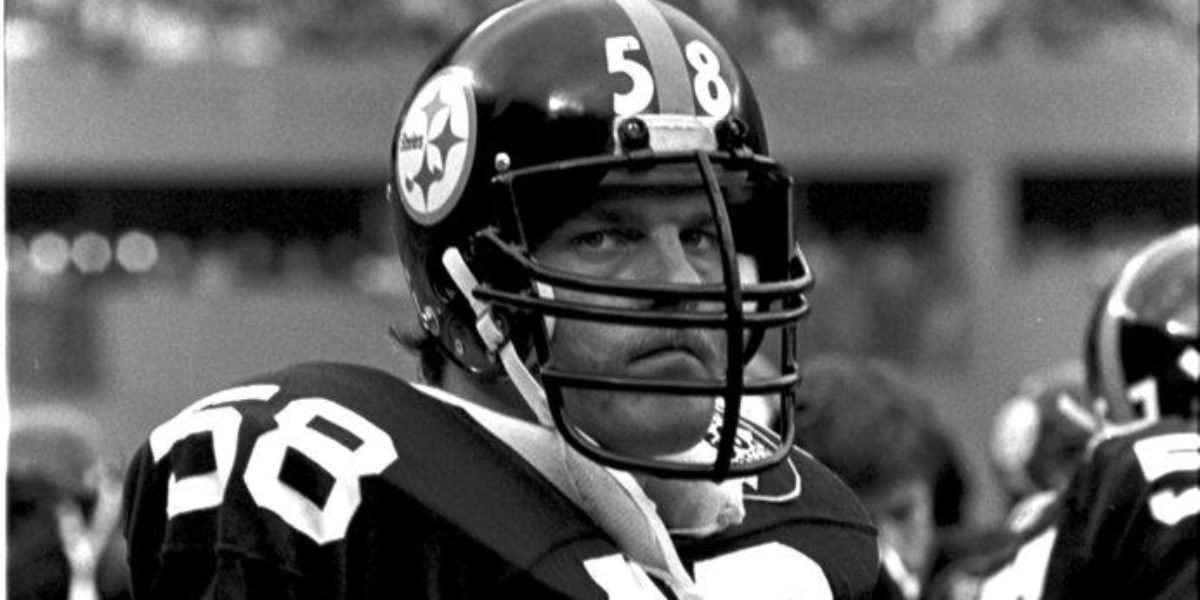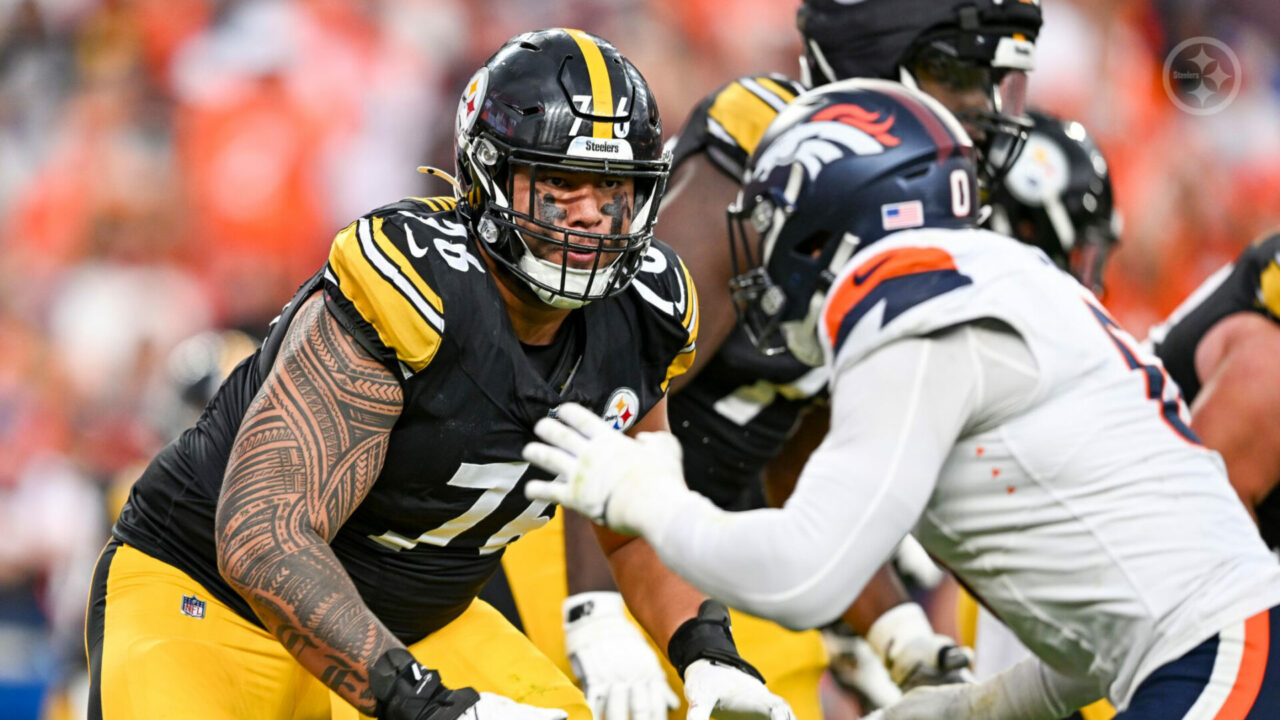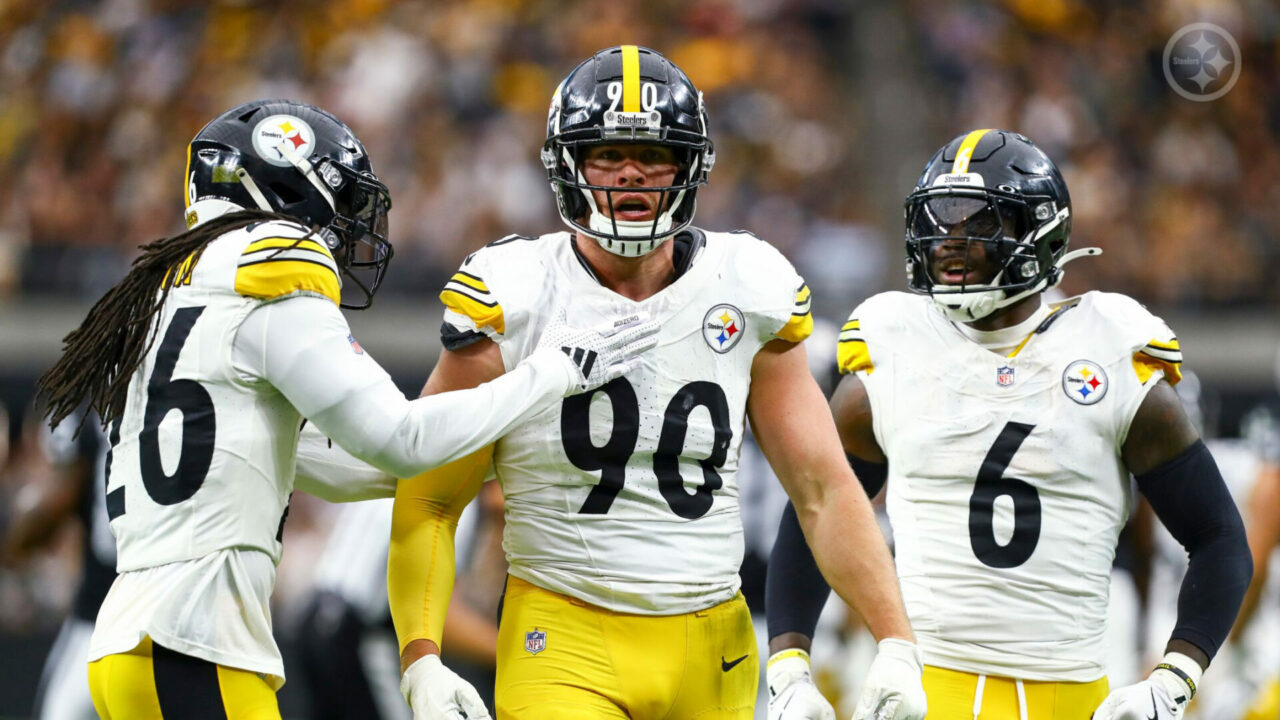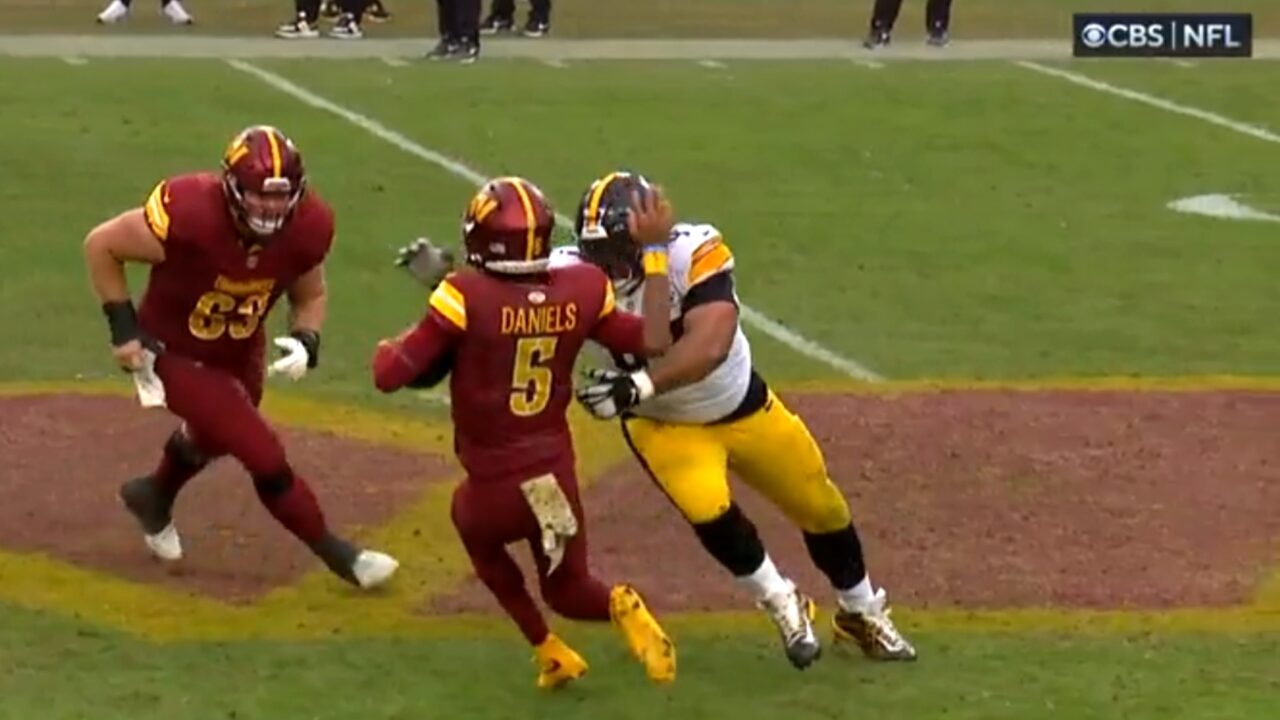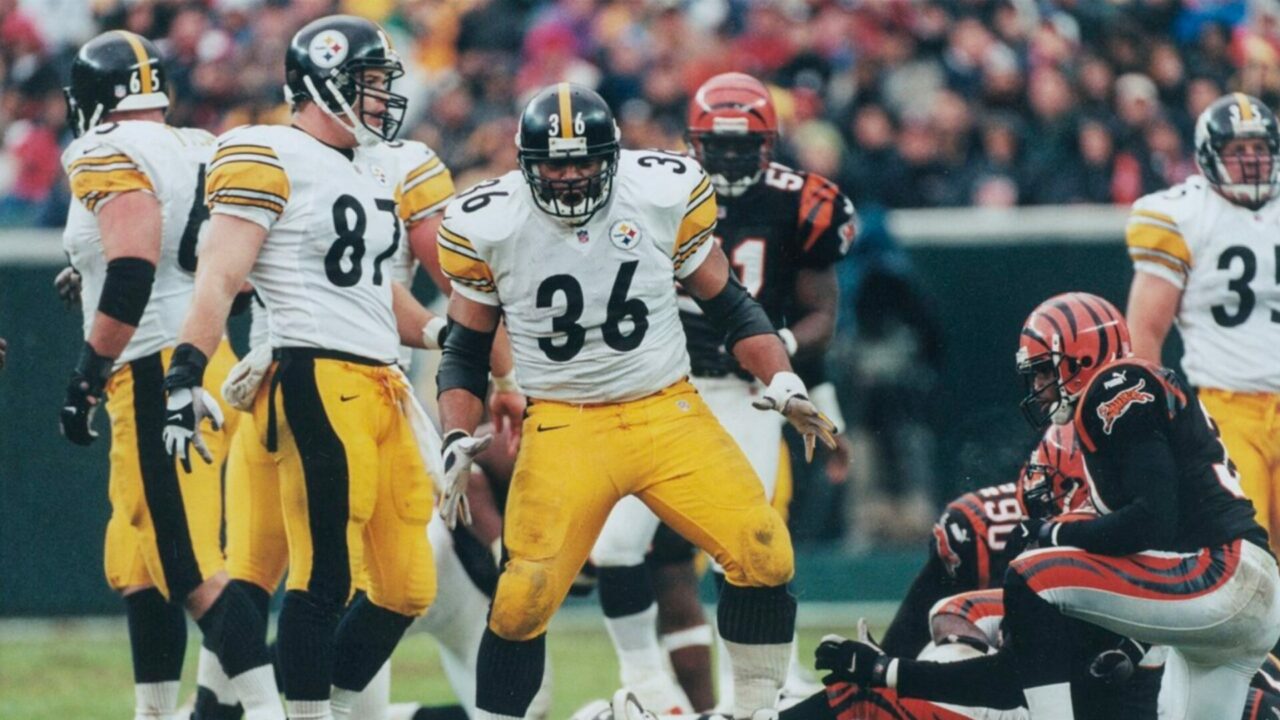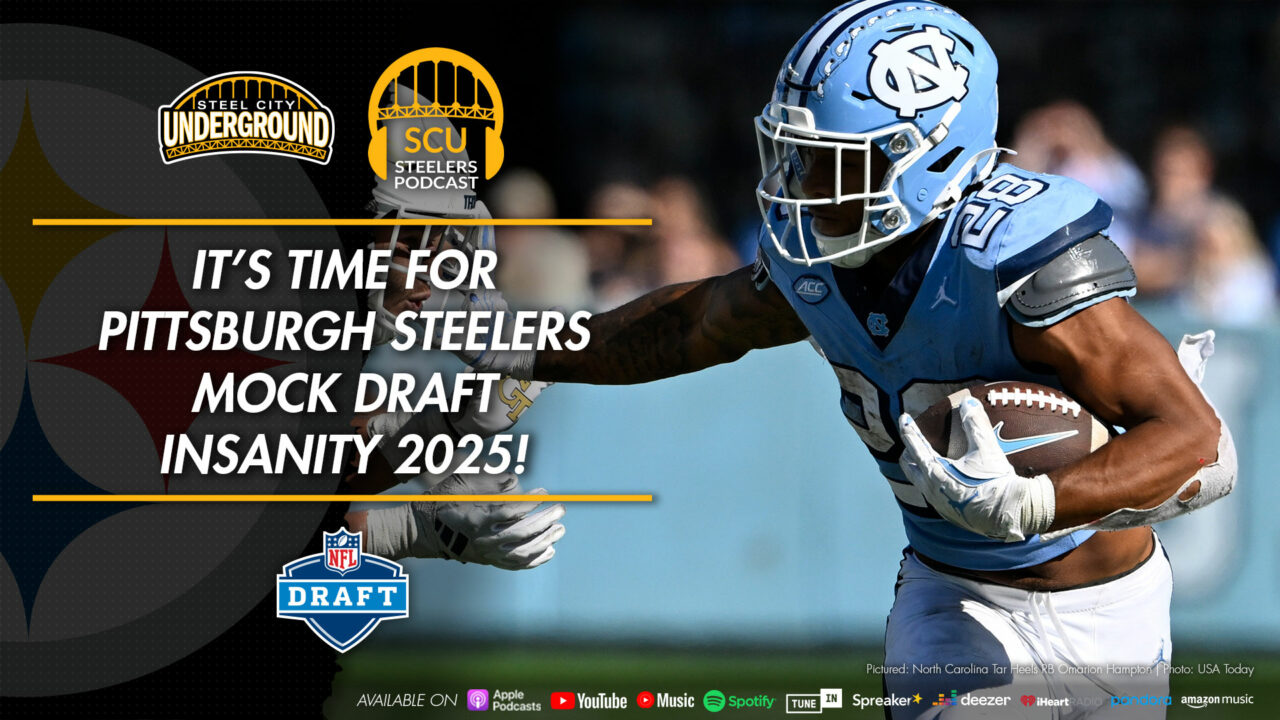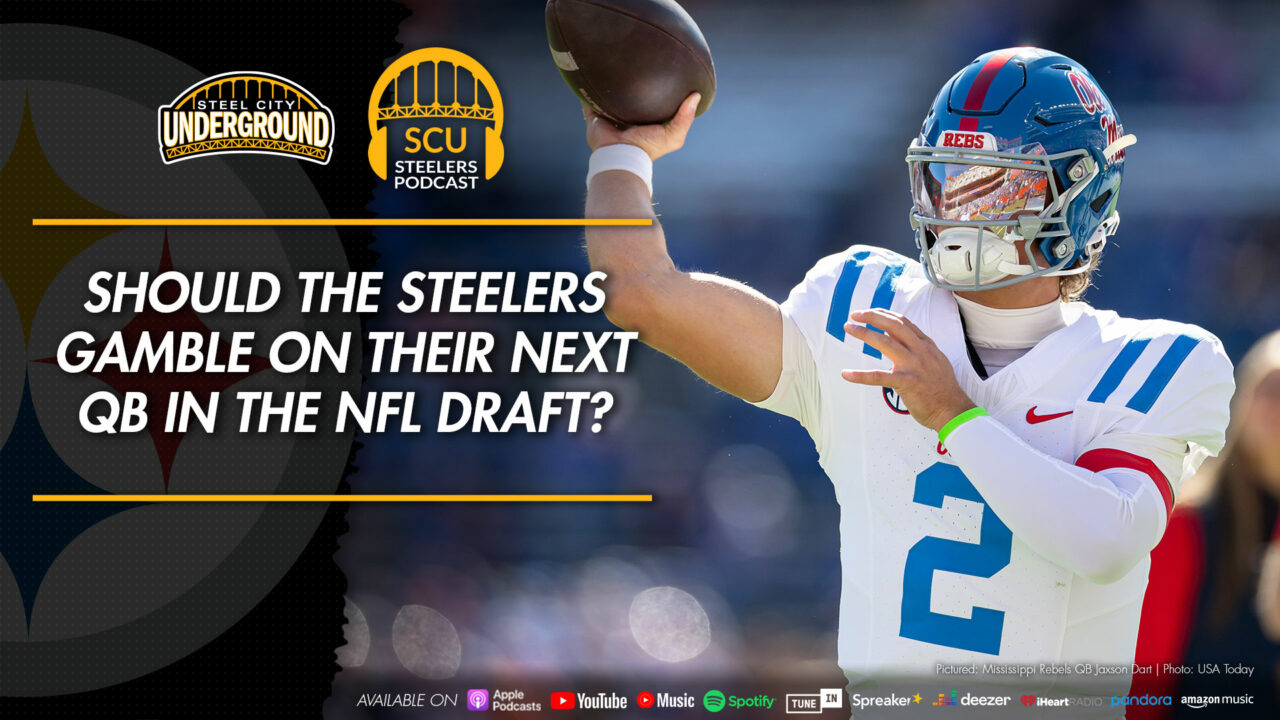The legend of Jack Lambert
“If I could start my life all over again, I would be a professional football player. And you damn well better believe I’d be a Pittsburgh Steeler.”
That’s a quote that any Steelers fan knows by heart. It’s a quote that sends chills up and down our spine, and in some instances, might even bring a tear to the eye. Those are words spoken by Jack Lambert upon his induction into the Pro Football Hall of Fame.
To many fans, Jack Lambert epitomizes the original “golden era” of Steelers football, predating the NFL games on TV today. No one would argue that Joe Greene is the quintessential Steeler, the man who is universally praised as the greatest Steeler of all time. However, it’s the gap-toothed “Dracula” mug shot of Lambert that immediately springs to mind when you think about the Steelers of the 70’s.
Born in Mantua, Ohio, Lambert played football at Kent State University (later home to James Harrison during his college career). Lambert was an All-Mid-American Conference linebacker twice during his Kent State career, but most pro scouts that he was too small to play linebacker at the professional level.
The Steelers saw something different.
When we think of Lambert, we think of “Mad Man Jack”, or his fan club “Lambert’s Lunatics”. But the truth about Jack Lambert is that he was much more than a wild man on the field. Art Rooney, Jr. tells a story that gives you some indication of the kind of leader Lambert was:
“At Kent, they had a quarterback who was evidently a dissipater, and he did something and they were going to throw him off the team. Lambert was the team captain. He went to Fitzgerald and said, “You can’t. You’ll wreck the team.’ Fitzgerald said, ‘O.K., but he’ll have to run a punishment drill.’ Lambert said, ‘I’ll run it with him to make sure he does it.’ Lambert ended up dragging him through.”
The stories about Jack Lambert are legend and legion. That story and many others can be found in what I consider probably the greatest piece written on Lambert “Jack Lambert, Defender of What Is Right”, by Paul Zimmerman. (If you’ve never read it, stop reading this and go read that right now. Then, you know, come back and finish this.)
In that piece, Zimmerman also quotes Lambert’s high school coach, Gerry Myers as he is recalling one of Lambert’s hits on an opposing player:
“After a while teams would stop running curl patterns in front of him. I can close my eyes now and see him hitting the split end from Streetsboro. Knocked his helmet and one shoe off.”
Those are the kinds of stories we expect to hear about Lambert. We all know the stories about how Lambert picked cinders out of his skin while practicing in a parking lot. We know the story of how Lambert threw Cliff Harris to the ground during the ’75 Super Bowl, coming to the defense of Roy Gerela. That story prompted Chuck Noll to give the quote that inspired the title of Zimmerman’s piece:
“Jack Lambert is a defender of what is right.”
Lambert had a hard time finding a home in college. His high school coach tried to get him into Miami (OH), which was his alma mater, but then Miami coach Bill Mallory didn’t think Lambert was fast enough to play in the secondary (where he played in high school) and thought he was too light to play at defensive end (where he would eventually play at Kent State before moving to middle linebacker). Myers told Mallory “You’d better hope he goes outside the Mid-American Conference because someday he’s gonna come back and beat you.”
In his junior year at Kent State, he did just that, making four straight tackles on a goal-line stand, all from inside the two.
A few MAC schools, and even Wisconsin all had minor interest in Lambert, but only Kent State was willing to provide him with a full scholarship. In his junior season, Lambert was voted MAC Defensive Player of the Year and the MVP of the Tangerine bowl. Still, he was a question mark from the standpoint of the NFL. What do you do with a 6’ 4 ½” skinny kid who most still considered “too slow”?
Art Rooney, Jr. and his cousin Timmy convinced the Steelers that Lambert was worth a second-round pick. The Steelers were divided, and it was between Lambert and Cal Peterson (who eventually ended up with the Cowboys). The question was, what do you do with him?
Ham and Russell were playing on the outside, and few Steelers fans are likely to remember that Henry Davis, the current Steelers middle linebacker had been a Pro Bowler just two years prior to Lambert being drafted.
But Lambert was different, and it showed almost immediately. Every weekend, he would drive to the Steelers’ office to watch film.
Who does that? Lambert does.
Lambert, as we all know, was drafted in the strike year of 1974, and while he got a long look during the preseason when the veterans returned, it was still Davis who was slotted to start at inside linebacker. But in one of the last exhibition games of the preseason, Davis suffered a nerve injury in his neck, and the door was opened for Lambert to take over the middle linebacker position.
He never looked back.
“I believe the game is designed to reward the ones who hit the hardest… if you can’t take it, you shouldn’t play”
Lambert gave then defensive coordinator Bud Carson a new tool, and between the two of them, they redefined the middle linebacker position. As Andy Russell is quoted as saying:
“Bud had him covering the tight end all over the field. He’d assign him the first back out of the backfield. Normally the middle linebacker covered the second back… but the first back, my God, it was thought to be an impossible assignment for a middle linebacker.”
Lambert became the quarterback of the Steelers defense. He made all the calls, sometimes changing the defensive sets four or five times pre-snap.
Lambert would hit, and he would hit hard.
After being flagged and ejected for a hit on Brian Sipe of the Browns, Lambert was asked after the game what had happened. He responded saying that the ref thought he had hit Sipe too hard. The reporter then asked Lambert if he had.
His response?
“I hit him as hard as I could.”
“The Steelers drafted guys who were bigger, stronger and faster than I, but they never found one who could take my job away from me.”
Lambert’s legacy is much more than statistics. In fact, since tackle and sack data is hard to come by prior to 2001, his statistical legacy can be summed up in the few lines that are listed on his Hall of Fame profile:
“Second-round draft pick, 1974… Prototype middle linebacker – intense, intelligent, fast, quick, durable… Noted for vicious tackling, great range, superior pass defense… Two-time NFL Defensive Player of Year… All-Pro eight times… In nine straight Pro Bowls, 1976-1984… In six AFC title games, four Super Bowls… had 28 interceptions, 17 fumble recoveries”
What Lambert did was cement the idea of what it meant to be a Steelers linebacker. Names like Ham, Russell, Lloyd, Merriweather, Gildon, Farrior, Harrison, Kirkland and more all come to mind when you think of the tradition of Steelers linebackers. But when you think of who, more than any other player, epitomizes the ideals of what a Steelers linebacker is, only one name rises to the top.
Jack Lambert.
Personally, Lambert will always be a touchstone figure, an icon. When I met him for the first time at a signing, I felt as I imagine many a teenager did upon going to a Beatles concert back in the 60’s. I was giddy. Lambert was gruff, he was engaging, and he was what you would expect him to be.
Only once, when my daughter ran up and hugged him, did he let the masque of his public persona slip just a little, as he gently hugged her back.
Intensely private after retiring, Lambert has never sought the spotlight, and his appearances are rare. As a result, the mystique of his fearsome “Dracula” like persona has never really faded from the public awareness.
Jack remains Jack.
Would anyone have really expected it to be otherwise?
